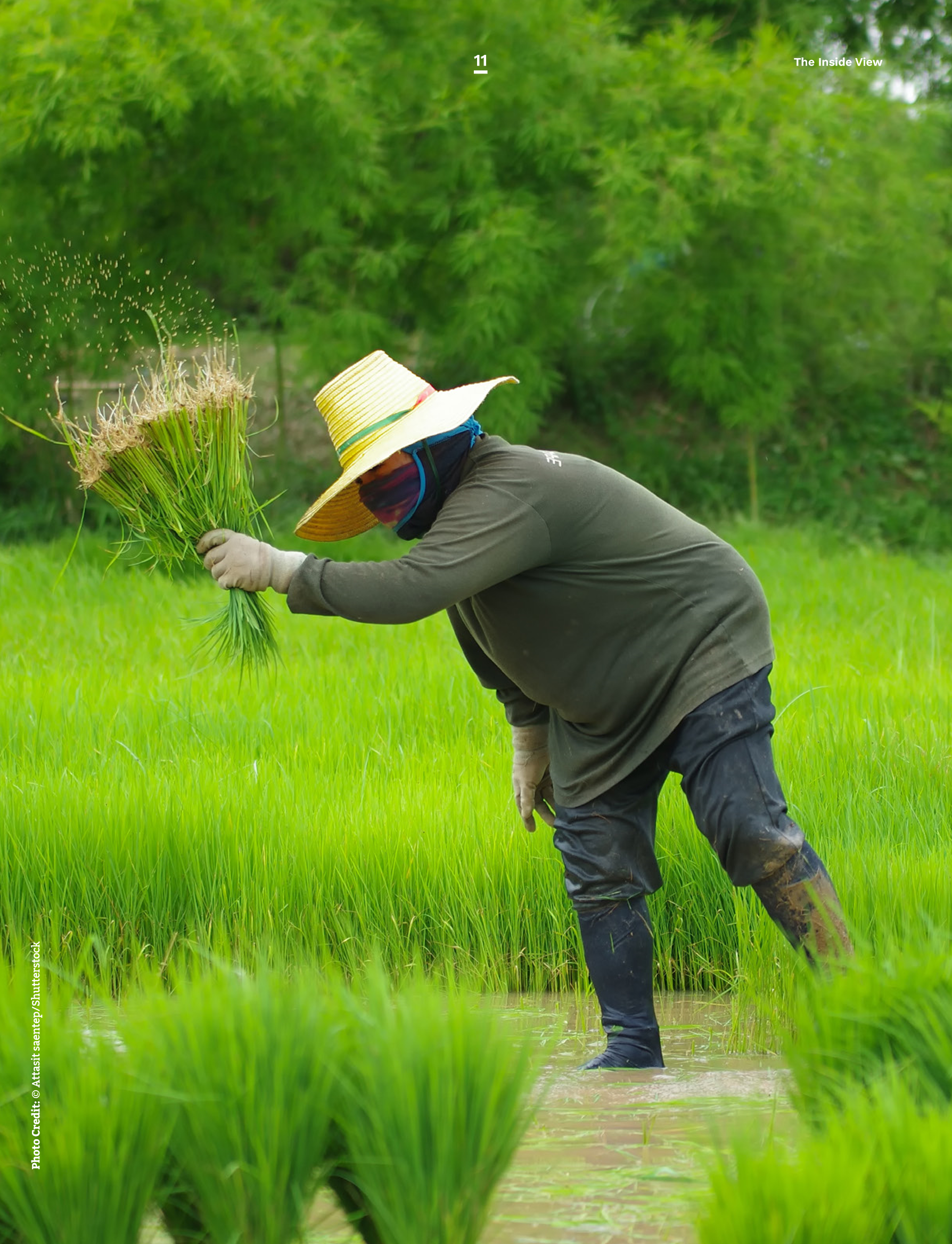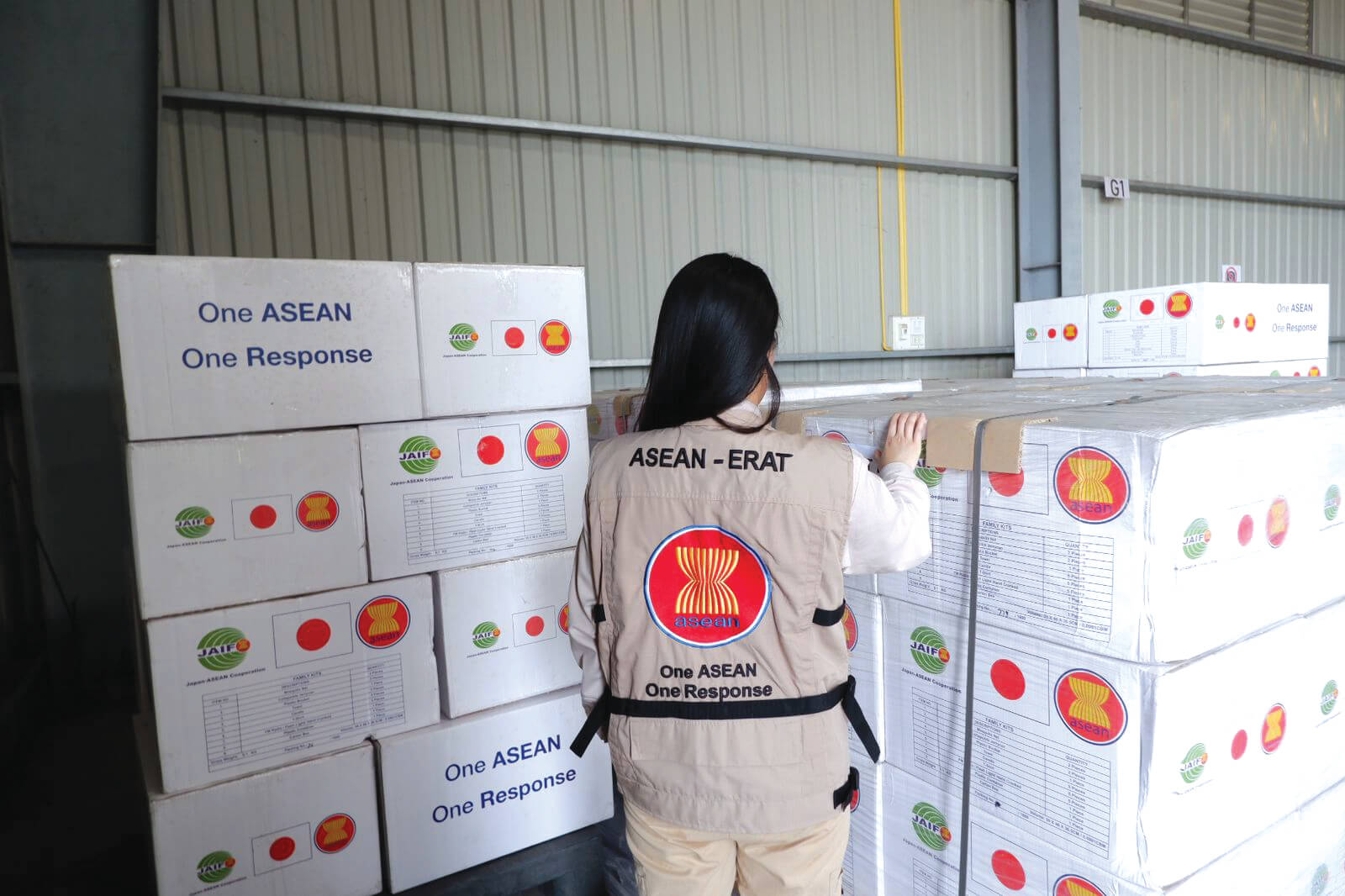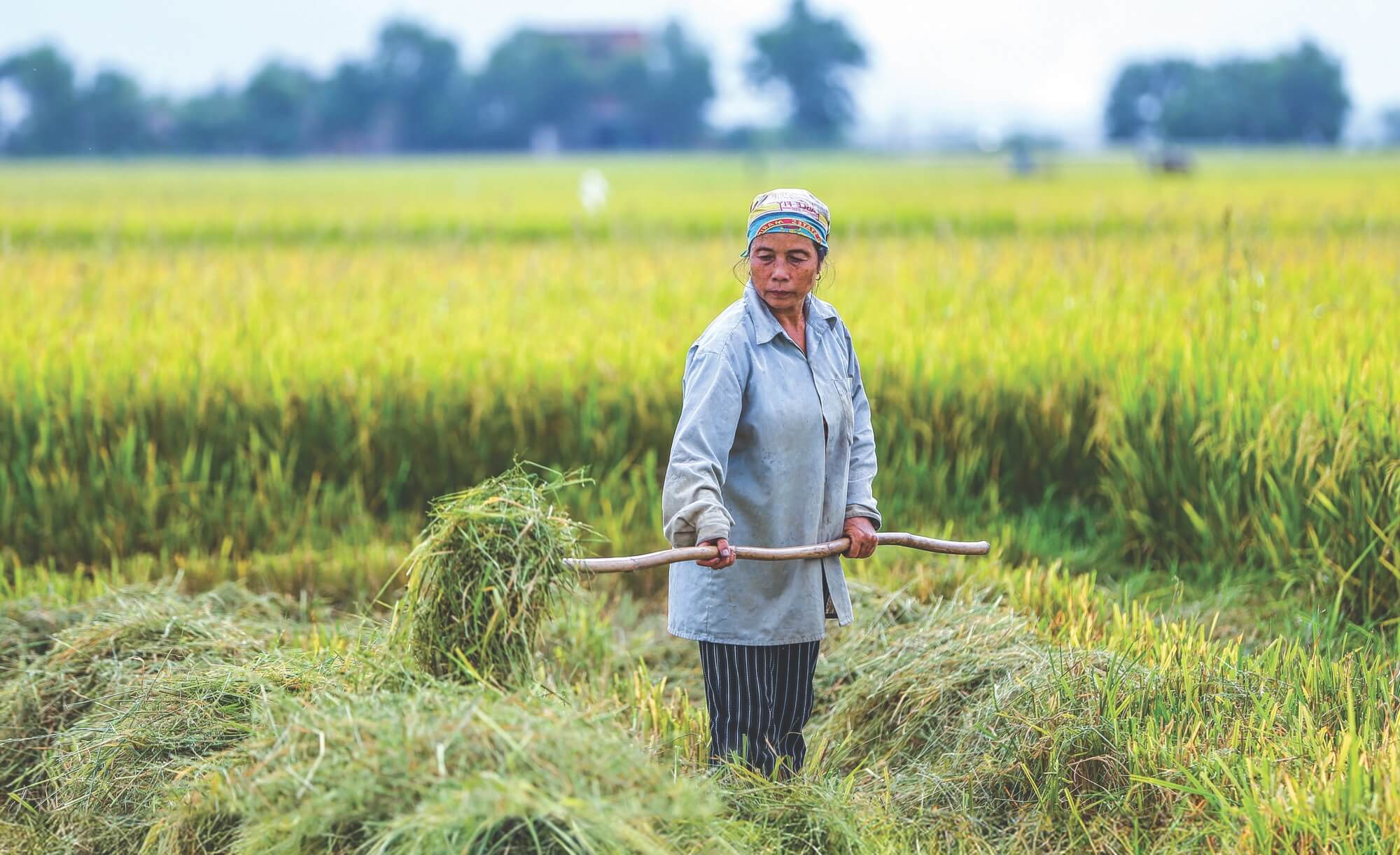



Reducing poverty and promoting rural development remains high on ASEAN’s agenda, especially in light of the COVID-19 pandemic. Around 140 to 160 million people are estimated to have fallen into poverty in 2021 due to the pandemic, and people living in rural areas are the hardest-hit. In the Asia and the Pacific region, an estimated 89 million more have been pushed back into extreme poverty. A 2021 report by the UN ESCAP (Economic and Social Commission for Asia-Pacific) says the total headcount would double if the higher income criteria of 3.20 or 5.50 US dollars per day are considered (UN ESCAP, 2021a) . Beyond income poverty, there are 640 million multidimensionally poor people in Asia and the Pacific region (UN ESCAP, 2021b). These are people who are deprived of at least one of three weighted indicators–health, education and standard of living.
In the ASEAN region, rural areas experience poverty twice as much as urban areas, and the pandemic has exacerbated this. Rural areas, in general, are characterised by inadequate public infrastructure for basic public services and social protection, as well as information and communications technology (ICT) systems even before the pandemic. The labour market in rural areas is largely informal and seasonal. Family farming is at the centre of agricultural production, with small holder producers tilling lands that are less than five hectares. Additionally, rural and older women carry most of the burden and remain largely at risk. They continue to undertake unpaid care and domestic work and are engaged mostly in informal employment.
A study by the International Monetary Fund (IMF) suggests that the COVID-19 pandemic will have a more significant impact on inequality compared to previous global pandemics (IMF, 2021). According to the IMF’s 2021 World Economic Outlook, the pandemic has triggered multiple forms of inequality, hitting certain groups the hardest—lower-income households, workers with lower education, minorities, immigrants, and women. Consequently, a rise in inequality triggers an increase in the incidence of poverty. It is estimated that a 1 per cent increase in the Gini Index in each country increases the number of additional poor by around 15 per cent or roughly 152 million people.
Turning the tide against poverty and inequality would necessitate a comprehensive and integrated whole-of-ASEAN approach. Pursuing transformative rural development is critical in ensuring the region’s economic, social, and environmental viability. And to reach ASEAN’s poverty reduction targets, poverty in rural areas must be reduced.
Rural Development: A Comprehensive and Integrated Strategy
As a strategy, rural development is undertaken to improve economic and social living conditions, focusing on groups of poor people in rural areas. The aim is to enable and engage them to benefit from development. Moreover, rural development pursues inclusive and sustainable approaches that balance investments, which spur local economic production and growth, with preserving the environment and securing the overall people’s welfare and well-being. Underlying this intersection is the recognition of the dynamic links between rural and urban spaces.
ASEAN’s cooperation on rural development and poverty eradication is overseen by the ASEAN Ministers Meeting on Rural Development and Poverty Eradication (AMRDPE). The AMRDPE provides strategic guidance and policy direction on regional development cooperation to uplift the lives of poor and vulnerable people from poverty and invigorate inclusive and sustainable growth in rural areas. The Senior Officials Meeting on Rural Development and Poverty Eradication (SOMRDPE) is a subsidiary body of the AMRDPE. The SOMRDPE supports AMRDPE by recommending regional policies, developing, implementing and reporting the progress of the five-year regional work plan, and engaging stakeholders and managing partnerships.
At the 18th SOMRDPE Meeting held in November 2021, SOMRDPE concluded implementing the ASEAN Framework Action Plan on Rural Development and Poverty Eradication (FAP-RDPE) 2016-2020. During this period, regional development cooperation projects were implemented, ranging from promoting rural economic growth and providing social protection and safety nets, to developing linkages between rural and peri-urban areas and building the resilience of the poor and vulnerable groups to economic and environmental risks.
Addressing cross-cutting issues is a prominent feature of SOMRDPE’s work in promoting rural development in the past five years. SOMRPDPE has been engaged in knowledge generation and in establishing consultative stakeholder platforms on achieving the SDGs, addressing the impacts of climate change, and contributing to the implementation of the ASEAN Comprehensive Recovery Framework and other ASEAN frameworks. SOMRDPE has also given importance to gender mainstreaming and women empowerment in rural development. It has emphasised the role of women in rural value chains, the strength of women’s leadership in local villages and committees, and their invaluable contribution to rural revitalisation.
Recently, the AMRDPE adopted the new FAP-RDPE 2021-2025. The overall goal of the new work plan is to improve the economic and social living conditions of poor people in rural areas and help the poorest of them benefit from development. The work plan covers five (5) outcome areas:
|
Key Result Area |
Strategic Objectives |
|
Economic |
Fastrack rural transformation to enable participation in socio-economic opportunities |
|
Human |
Ensure access to education, social services and healthcare towards enhanced welfare and healthy lifestyle in rural communities |
|
Protective |
Institutionalise disaster preparedness programmes to environment and climate change risks towards resilient communities and households |
|
Political |
Ensure good governance, institutionalise mechanisms and processes to strengthen convergence of rural development and poverty eradication initiatives |
|
Inclusivity |
Institutionalise multi-stakeholder rural development mechanisms, especially for rural women and youth participation, and other vulnerable sectors |
A hallmark of SOMRDPE’s work promoting rural development is stakeholder engagements and partnership. The annual conduct of the ASEAN Public-Private-People Partnership Forum on Rural Development and Poverty Eradication has served as an effective platform to bring together governments, civil society organisations, farmers organisations, the private sector, international organisations and other stakeholders and deliberate on issues affecting the region. SOMRDPE also recognises the contributions of civil society organisations and the private sector through the ASEAN Leadership Award on Rural Development and Poverty Eradication. Given bi-annually, the award features best practices and innovative approaches in promoting rural development and poverty alleviation.
In addition, the goal of achieving the SDGs figures prominently in SOMRDPE’s new work plan. Through the years, SOMRDPE has pioneered the establishment of knowledge-sharing platforms that would accelerate actions to achieve the SDGs. Recently, SOMRDPE convened the 6th ASEAN-China-UNDP Symposium on SDGs: Reducing Inequality in the Decade of Action to Achieve the SDGs and Recovery from the COVID-19 Pandemic.
Inequality is a barrier to human development as individuals and groups face disadvantages based on their attributes and circumstances. During the forum, a specific focus was placed on bridging the rural and urban divide, particularly by promoting integrated development to eradicate poverty. There was also an emphasis on bridging the digital divide through quality education and access to technology, particularly for the youth, small farmers and women.
At the height of the COVID-19 pandemic in 2020, the AMRDPE Ministers convened a Special Meeting on Reducing Poverty and Building Resilience: Towards COVID-19 Recovery. The AMRDPE underscored the importance of protecting the poor and vulnerable from the impacts of the pandemic. Ensuring this requires adopting a pro-poor, inclusive, gender-, and climate-responsive approach to recovery. Undertaking recovery initiatives need to invigorate rural livelihoods and ensure that local rural economies and the food systems are moving without disruption, which entails empowerment of small-scale farmers and diversification of agriculture supported by innovation and technology. Specifically, such initiatives need to address the specific constraints faced by rural women and rural youth and unleash their potentials. In addition, inclusive and sustainable recovery from the pandemic would promote investment in rural infrastructure, including physical and economic infrastructure and human development. Equally important is strengthening integrated policy frameworks to address governance gaps in the rural-urban continuum at all levels and cross-sectoral and inter-sectoral cooperation at the ASEAN level.
ASEAN Master Plan on Rural Development
Rural development is a cross-cutting issue. It occupies the space where issues converge, such as agricultural production, disaster and climate resiliency, gender equality and women empowerment, social protection, labour and migration, technology, and urbanisation, among others. Understandably, these issues require focused attention to avoid fragmented policy approaches. Such siloed processes can be observed at the national and regional level across the ASEAN Community pillars.
SOMRDPE’s initiative to develop a master plan on rural development intends to provide a cohesive guiding framework for ASEAN’s rural development and poverty eradication agenda. In particular, it dissects the nexus between food security, agriculture development, and rural development, as they are shaped and informed by underlying factors such as those mentioned above, taking into account the impacts of the COVID-19 pandemic.
The master plan aims to inform and potentially steer public and private investments towards transformative rural development. The plan includes building an efficient agriculture sector that meets the food needs of the people, securing food security in a region that is increasingly becoming urban and non-agricultural, and uplifting the lives of poor and vulnerable groups in rural areas in ASEAN. The master plan is aimed to be finalised in 2022.








